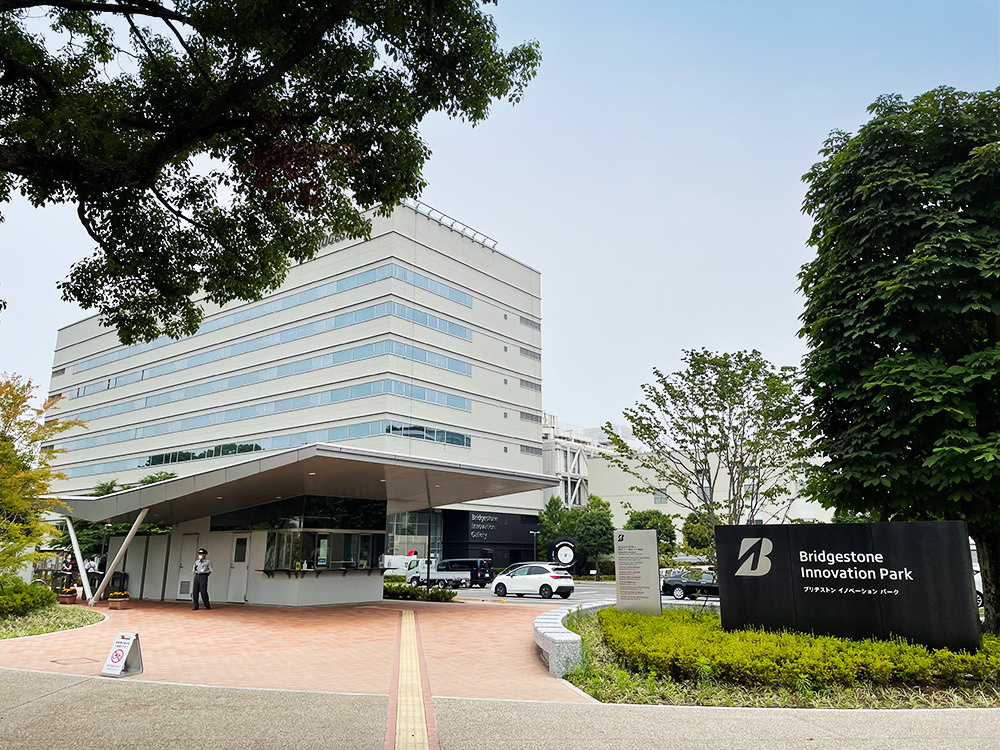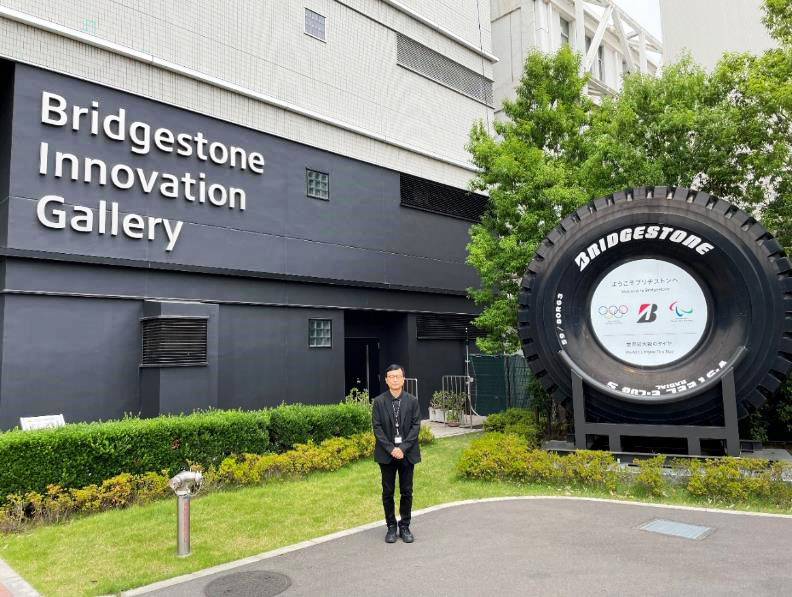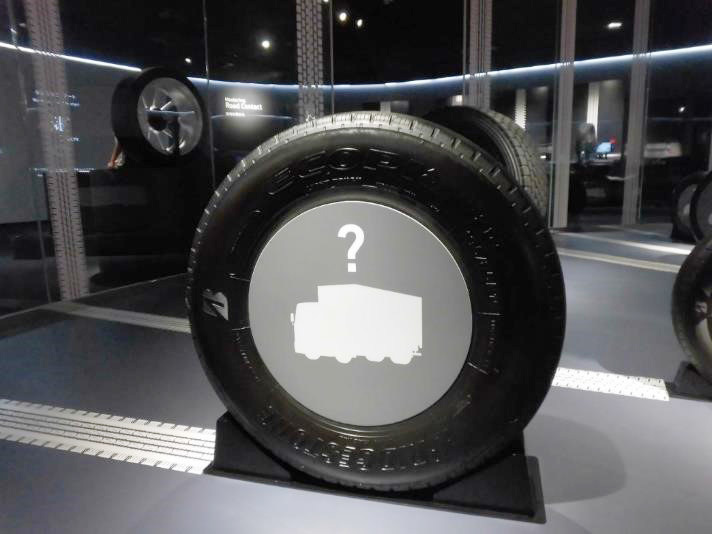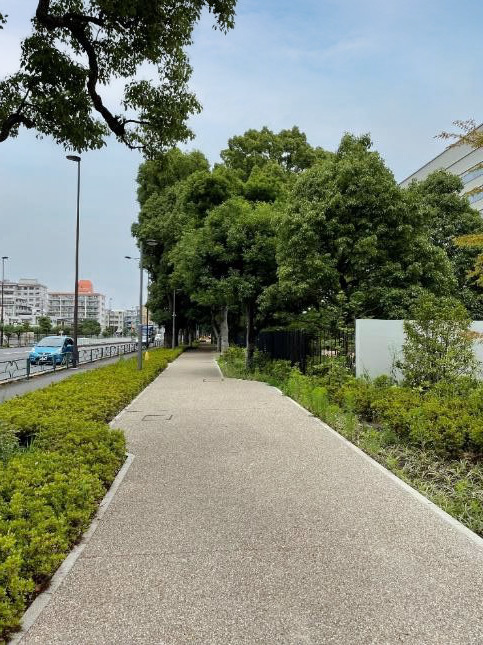Note: This website was automatically translated, so some terms or nuances may not be completely accurate.
Bridgestone Innovation Gallery: Co-creating the Future of Business

Corporate museums occupy a buffer zone spanning both the academic realm of "museums" and the business realm of "corporations." They are organizations that collaborate extensively with various corporate departments responsible for their operation, including public relations, branding, advertising, and human resources. In this series, PR professionals will introduce various museums operated by corporations, exploring their roles, functions, and potential.
Bridgestone, a driving force in Japan's automotive industry and a world-renowned tire manufacturer, operates the Bridgestone Innovation Gallery as a venue to showcase its history and innovations for the future. This article examines how the Bridgestone Innovation Gallery connects the corporate museum to business and explores its engagement with various stakeholders.
Reporting and Text: Yuta Asai (PR Consulting Dentsu Inc.)
A New Facility Born from a 7-Year Vision
Exit the east gate of Ogawa Station on the Seibu Kokubunji Line in Kodaira City, Tokyo, and you'll find a road stretching straight ahead. It's called "BS Central Street," with "BS" standing for "Bridge Stone." Walking along this street lined with buildings bearing the Bridgestone name, you'll arrive at your destination: the Bridgestone Innovation Gallery (hereafter: Bridgestone Innovation Gallery). This museum, which just opened to the public in November 2020, showcases Bridgestone's history, business activities, and initiatives for the future.

The Bridgestone Innovation Gallery is not a standalone facility. It is part of a larger complex called the Bridgestone Innovation Park. Bridgestone Innovation Park is a complex designed to begin by fostering shared understanding among various stakeholders regarding the company's journey and its vision for 2050. It aims to deepen relationships through "shared discussion" and "shared research," ultimately evolving into "co-creation" where new value is jointly developed.
In April 2022, the park began full-scale operations with the opening of two new facilities: "B-Innovation," where external partners can develop and materialize ideas, and the test course "B-Mobility." In essence, the flow is this: the vision born at the Bridgestone Innovation Gallery is shaped at "B-Innovation," tested at "B-Mobility," and then connected to co-creation. The fact that it is also used for creating "business" sets it apart from other corporate museums. With a planning period of about seven years and an investment of approximately 30 billion yen, the company's commitment is palpable.
A place you must pass through before reaching the Technology Center
This time, we were guided by Hidenobu Mori, Director of the Bridgestone Innovation Gallery. Since joining the company in 1991, Mr. Mori has worked in the Overseas Division, handling supply chain management and marketing. He became Director upon the gallery's opening in 2020 and personally conducts guided tours. Appointing a director with diverse experience, including overseas assignments, rather than someone from a purely technical background, is perhaps a unique characteristic of this museum where business is created.

The Bridgestone Innovation Gallery is divided into four areas: 1. WHO WE ARE / 2. WHAT WE OFFER / 3. HOW WE CREATE / 4. WHERE WE GO. The first area, "WHO WE ARE," allows visitors to feel the journey and DNA of Bridgestone since its founding. The first thing that catches the eye is likely the company logo from its founding days. It's a simple logo featuring "BS" within a design inspired by the keystone—the most crucial stone in a stone bridge. Replicas of tires from the founding era are also on display.

Several milestones stand out in the company's history, one being the completion of the Technical Center in 1962. Previously, the R&D departments were split between Kurume City, the founding location, and Tokyo. However, in connection with the Tokyo Plant construction plan, the Technical Center was newly established as a comprehensive research facility.
The location chosen for this Technical Center was Kodaira City, Tokyo. While many companies establish corporate museums at their founding sites, Bridgestone's reason for building its museum in Kodaira City lies here. The Technical Center still exists today, functioning as the hub for the globally active company, with data from around the world converging in Kodaira City. Furthermore, "We designed it so that visitors must pass through here as the route to the Technical Center," explains Director Mori. Many external partners visit the Technology Center, and by having them pass through the Bridgestone Innovation Gallery, they not only connect with the company's history but also recognize the wealth of solutions available, sparking new innovation.
Tire quizzes that spark intellectual curiosity are hugely popular with children.
The second area is "WHAT WE OFFER." This section focuses on Bridgestone's core business, "tires," introducing the origins of rubber, a key component, and the role of tires.
Upon entering the "WHAT WE OFFER" area, visitors are immediately greeted by a variety of tires differing in shape and size. A quiz challenges them to identify which type of vehicle each tire is used on, with only the outline of the correct vehicle illustrated on the front.

The concept is to guess which vehicle each tire is used on based on the illustration, the tire's size, and the tread pattern. Peeking at the back reveals the answer. Tire size, tread shape and depth, and even color vary depending on the application. For example, white tires are used in factories to avoid staining the floor. This area showcases the company's meticulous technology and the infinite possibilities of tires.

While I've focused on the business aspects so far, the Bridgestone Innovation Gallery targets diverse audiences. This "WHAT WE OFFER" area, in particular, features many exhibits designed to spark children's intellectual curiosity. When I asked Director Mori what types of visitors typically come to the museum, he mentioned, "It's frequently used for field trips and school excursions."
"We conduct interviews with teachers beforehand to understand what kind of field trips would be beneficial, and we implement them accordingly, resulting in very high satisfaction. For example, we developed worksheets that explain the entire life cycle of a tire, allowing students to learn in a puzzle-solving style." It became clear that the museum offers enjoyment for both adults and children.
From Tire Maker to Solution Company
The third area is "HOW WE CREATE." Here, exhibits showcase Bridgestone's diverse innovations aimed at solving challenges across a wide range of fields. Examples include recycled carbon black made by pyrolyzing used tires. The company's vision is "By 2050, to be a sustainable solutions company continuously providing social and customer value." The word "tire" does not appear even once. While tires remain its core business, the company continues to evolve into an enterprise that creates new solutions leveraging its accumulated experience and technology.
When visiting the Technology Center, various external partners experience this area and are often surprised, remarking, "Bridgestone can do this too?" It is said that shared appreciation for the technologies and solutions showcased here sometimes leads to collaborative projects.
The Corporate Museum as a Starting Point for PR Activities
The final area is "WHERE WE GO." Here, visitors can sense the new future opening up beyond innovation. Specifically, exhibits include tires for the moon, tires that can charge while driving, and even airless tires. Sharing the "future" in this tangible way should also boost employee motivation.

"Employees are among our stakeholders. Since we opened during the pandemic, few have visited in person, but we offer online guided tours. These are used not only for Japanese employees but also for training at group companies worldwide. Due to time differences, we haven't yet provided real-time explanations to employees in places like the U.S., but for our Asian affiliates in Thailand, Indonesia, and elsewhere, we deliver 100% live broadcasts to convey Bridgestone's spirit."
Director Mori emphasizes the importance of conducting guided tours live, not pre-recorded. To capture the interest of busy employees, it must be real-time to convey that "we're doing this for you." This approach has proven effective, with sales staff even requesting tours, stating, "We want our clients to know about Bridgestone, so please conduct a guided tour." This episode illustrates how the Bridgestone Innovation Gallery has become one of the starting points for Bridgestone's PR activities.
Active Collaboration with Local Communities like Cities and Universities
The museum tour concludes in four areas. However, Bridgestone's appeal extends beyond the museum walls. Beyond the previously mentioned field trips, the company engages in community contribution activities. For example, immediately to the right upon exiting the Bridgestone Innovation Gallery is a beautifully paved path. This 450-meter-long sidewalk, called the "Bridgestone Parkway," was developed through collaboration between Kodaira City, Tokyo Metropolitan Government, and Bridgestone. It utilizes Bridgestone's land to provide local residents with a safe, secure, comfortable, and enjoyable walking experience. Furthermore, the museum actively engages in partnerships with Kodaira City and the local community. For instance, it collaborates with Musashino Art University, located very close to the museum, on exhibition planning as part of an industry-academia collaboration project.

While some corporate museums charge admission, the Bridgestone Innovation Gallery is free to enjoy. Director Mori explains the reason: "We want people to become fans of Bridgestone. And we want to contribute to the community." For the company, which has conducted business in this area since 1962, the significance of Kodaira City's presence is clear.
Finally
We've repeatedly referred to the Bridgestone Innovation Gallery, but why use "Gallery" instead of "Museum" for a corporate museum? According to Director Mori, the reason is that while a "Museum" introduces the past, the Bridgestone Innovation Gallery is a place that showcases not only the past but also activities for the future.
Until 2019, the same location housed a corporate museum called "Bridgestone TODAY." True to its name, it was a museum introducing Bridgestone's history up to the present. However, unlike "Bridgestone TODAY," the Bridgestone Innovation Gallery showcases the company's activities from its past through the present and into the future. The name truly reflects the essence. We hope this space will give birth to various innovations.
[Editor's Note] (From the Web Dentsu Inc. Editorial Department)
The origin of Bridgestone's company name is often attributed to the "Ishibashi" in founder Shōjirō Ishibashi's surname. Stone bridge, hence Bridgestone. That much is common trivia. In March 1906, at age 17, Mr. Ishibashi took over his family's tailoring business and began specializing in tabi socks. He later achieved success with "chigatabi" – tabi socks with rubber soles. Bridgestone's roots trace back to handling rubber for these chigatabi.
Already, it feels like watching a Hollywood movie. Think about it: rubber is truly a remarkable material. From rubber bands to tires, it's indispensable in our lives. And its greatest charm is its "flexibility." It's not stone, nor wood, nor iron. It's rubber's unique flexibility that underpins society.
As an editor's note, this might come across as a bit playful, but allow me to say it anyway. A man with the solid name "Ishibashi" recognized the "soft" charm of rubber. Isn't this the very essence of innovation?
Was this article helpful?
Newsletter registration is here
We select and publish important news every day
For inquiries about this article
Back Numbers
Author

Yuta Asai
PR Consulting Dentsu Inc.
Joined the company in 2021. Assigned to the Information Distribution Design Bureau, where I engaged in information distribution design work for newspapers, magazines, and web media from a media perspective. Specializing in social media consulting, I handled social media post planning and public relations strategy development primarily for home appliance manufacturers and beverage companies.



